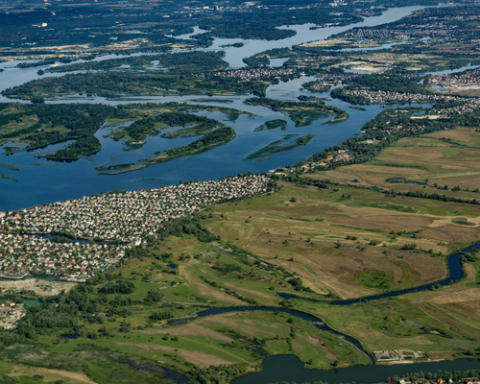
UNITAR Online Catalogue
Integrated Planning for Climate Change and Biodiversity - 2022 - Q3

Multilateral Diplomacy
Background
Land-use planning frameworks have traditionally focused on developing settlements and related infrastructures with limited consideration of biodiversity conservation and climate adaptation and mitigation requirements. It is underused in maximizing win-win solutions for human well-being and sustainability under the threat of global climate change. Awareness and knowledge of land-use planning as a tool for biodiversity and climate resilience are to be raised and strengthened among relevant actors at various levels.
Event Objectives
The overall goal of this course is to increase the capacity of key stakeholders to optimize planning to support biodiversity and climate change adaptation objectives, including through the effective engagement of protected area systems.
Learning Objectives
Upon completion of the course, you will be able to:
- Identify the interaction of climate change and biodiversity with land-use plans;
- Identify principles and concepts of land-use planning for incorporating biodiversity and climate change into spatial development plans;
- Explain the role played by protected areas and village planning;
- Explain policies and laws across sectors;
- Identify relevant stakeholders across institutions;
- Identify stakeholder positioning in the planning and decision making process;
- Explain how stakeholders can engage in planning and decision making process:
- Identify the different layers of governance involved in planning across village, district, regional and national levels;
- Identify ways to collaborate across national borders.
Content and Structure
The course is divided into four modules:
Module 1: “Connecting land-use, climate change and biodiversity” covering:
The spatial planning – biodiversity – climate change nexus
Principles and concepts of land-use planning for incorporating biodiversity and climate change into spatial developments plans
The role played by protected areas in village planning
Module 2: “Inter-sectoral and inter-institutional collaboration” covering:
Introduction to international laws and policies
Cross-sector approach to laws and policies concerning integrated land use planning
Identification of all relevant stakeholders in integrated land use planning
Module 3: “Public participation in decision-making” covering:
Positioning stakeholders in the planning and decision making process
Stakeholder engagement in the planning and decision-making process
Module 4: “Regional planning for harmonization and connectivity”
Multilevel and multi-scale governance
Transboundary governance
Methodology
This self-paced course promotes a dynamic approach through lessons and multi media materials, stimulating critical thinking. It provides flexibility, since you will be able to complete the course at your own pace and time. Contents and activities are practice-oriented and under a self-learning approach. You will also learn through practical example, scenarios and knowledge assessments.
Targeted Audience
Government officials, representatives of international organizations and NGO, protected areas staff, academics and private sector professionals with an interest in development, climate change, and nature conservation.
Additional Information
Once you meet the passing criteria for the course you will receive a Certificate of Completion jointly delivered by UNITAR and IUCN.
Kindly be advised that you should have access to an internet connection to complete the course.